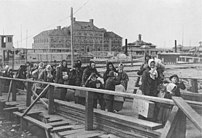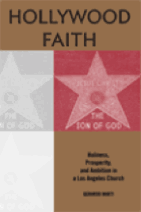I was asked to contribute to a proposed book of essays on second-generation immigration -- specifically on Latinos, and specifically on their racial and religious identity. I submitted my draft this week. Looking back at the process, I found that in putting my thoughts together I was quickly overwhelmed with the complexity of the subject.
What to say in 25 pages??
 Immigrants at Ellis Island. Image via Wikipedia
Immigrants at Ellis Island. Image via Wikipedia
Everywhere else in daily life we expect to encounter cross-ethnic diversity like going to school, shopping at the mall, or working at a job for pay. But churches are “ethnic islands” that protect and preserve ethnically based religious cultures, even if younger generations accentuate more of their lives and identities outside of their religious commitments in comparison with their parents and grandparents.
This presents an overarching "mono-ethnic" assumption of church life. And the assumption leads us to a set of “either-or” categories. Younger generations either continue their ethnically-specific religious commitments in particular ways (often with modifications) or they abandon these religious commitments in favor of more general, more assimilated (meaning more “white”) ways of living in society—with our without a religious adherence.
As an ethnographer, I try to pay close attention to the actual context of people's lives. I want to be around ordinary people doing ordinary things to understand their ordinary actions and attitudes. And then I try to understand how their "ordinary" lives fit into "extraordinary" circumstances that allow thier lives to happen. This is part of what's been called a “lived religion” approach. It's an approach that pays close attention to history and context and provides opportunity to see the variety of ways race, ethnicity, and identity co-mingle.
 Image via Wikipedia
Image via Wikipedia
The second-generation Latinos in this integrated congregation identify themselves as “Hispanic” yet understand come to understand their religious identities in non-ethnic ways.
Add to this the general dynamic faced by immigrants in American society. Immigrants often struggle to define their particular cultural identity in an increasingly diverse society that tries to lump them in often “unwanted and crude” categories—even among social scientists.
 The Hispanic World. Image via Wikipedia
The Hispanic World. Image via Wikipedia
In day-to-day life, many Latinos simply learn to “code switch” between being “Hispanic” at home and being “non-Hispanic” and church, school, or work.
I think we all need to pay more attention to the complexity and paradox so often found within specific ethno-racial communities. By incorporating ethnographic studies of Latino congregations and adding the experience of Latino members from Mosaic in Los Angeles, I want this chapter to underscore the nuances available to those willing to grasp the diverse ways in which religion intertwines with race and ethnicity. The highly contextual nature of ethnic-designations, racial relations, and the process of forming religious identities encourages us all to attend more closely to the multiple identities that inevitably impinge on American Latinos and, in turn, to the variable reconstructions of racial, ethnic, and religious categories among all American ethnic groups across the generations.



No comments:
Post a Comment